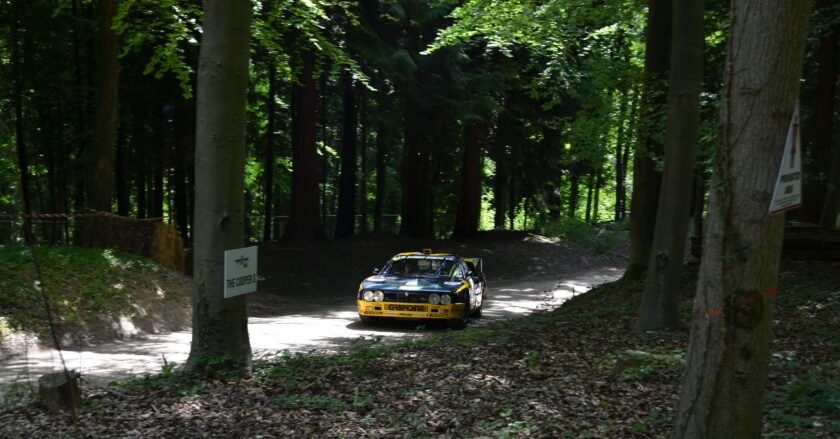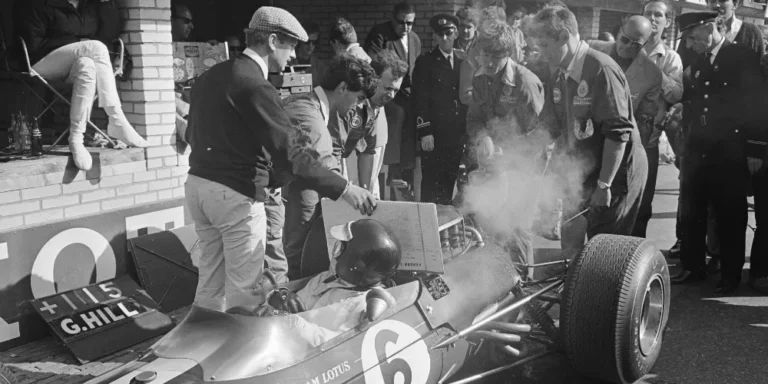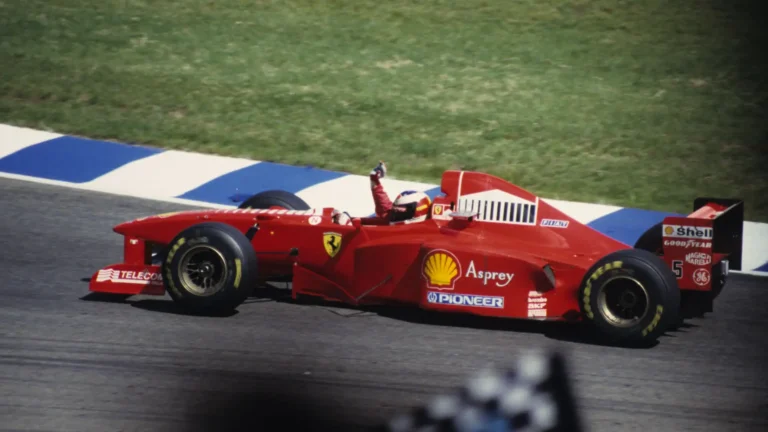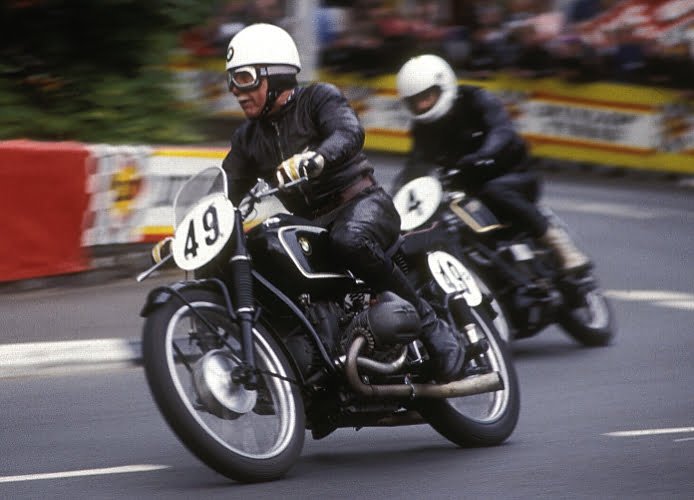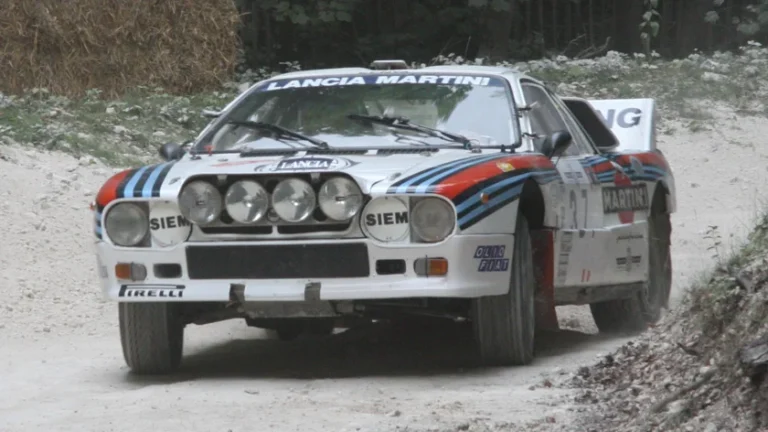The Evolution and Endurance of Rallying: A Comprehensive Historical Perspective
Picture by Neil on Flickr
Introduction to Rallying
Rallying, a distinctive motorsport, captivates both drivers and spectators through its unique blend of speed, strategy, and adaptability. Unlike circuit racing, where competitors race alongside one another on smooth, predictable tracks, rallying unfolds over diverse terrains that push the limits of both vehicle and driver. This sport’s appeal lies in its unpredictability and the formidable array of challenges it presents. Drivers must navigate through varied surfaces such as gravel, tarmac, and snow, often transitioning between these within the same event.
The structure of a rally race is inherently different from conventional races. Competitors race against the clock rather than side-by-side, with staggered starts designed to minimize direct interference between drivers. This format, known as a time trial, emphasizes precision and adaptability over sheer speed. Each rally usually consists of a series of special stages, timed sections of the course, interconnected by liaison sections where drivers must adhere to regular traffic laws. The winner is determined by the cumulative time taken to complete all special stages, adding a layer of strategic depth as teams decide when to go all-out and when to conserve their resources.
One of the most striking aspects of rallying is the variety of environments it encompasses. Races can take place on surfaces ranging from loose gravel to smooth asphalt, and even treacherous snow and ice. These varying conditions demand a high degree of technical skill and versatility from drivers and co-drivers. The latter play an indispensable role, navigating the course through detailed pacenotes and ensuring that the driver is prepared for every twist and turn. This emphasis on teamwork distinguishes rallying from most other motorsports, where the focus typically rests squarely on the driver.
In summary, the essence of rallying lies in its multifaceted demands and scenic yet hazardous tracks that test the mettle of even the most seasoned competitors. Its blend of endurance, precision, and diverse environments sets it apart, offering a racing experience like no other and affirming its rich place in the annals of motorsport history.
Rally racing, as a prominent motorsport discipline, finds its origins in the early 20th century. This period marked the inception of structured competitive events, propelling this dynamic sport into global recognition. One of the initial significant events was the Monte Carlo Rally, first held in 1911. The rally was conceived by Prince Albert I of Monaco, with the motivation to attract tourists to the region during the winter season. Competitors began their journey from different European cities, converging towards Monte Carlo, facing unpredictable weather conditions and diverse terrains along the way.
The early years of rally racing were characterized by a lack of standardized routes and the diverse nature of vehicles traversing these challenging paths. Initial rallies drew participation from a variety of automobile types, ranging from modest family cars to more robust models designed with the rigors of such competitions in mind. Notably, these early vehicles were far from the specialized machines seen in contemporary rally sports, yet they managed to showcase resilience and ingenuity.
As rally events began to gain popularity, certain organizational structures were gradually put in place to ensure fair competition and safety. Routes were carefully mapped out, with checkpoints established to monitor driver progress and provide necessary logistical support. The governing rules of these nascent events stipulated that vehicles must comply with road-legal status; thus, ensuring that participants experienced what was essentially an extended variation of ordinary day-to-day driving, albeit under competitive circumstances.
The spirit of rallying in its formative years was deeply rooted in endurance and adaptability. Teams and drivers were required to navigate a multitude of terrains which included snow-covered pathways, rocky mountain passes, and ever-changing weather conditions. The challenges presented by these varied landscapes fostered a sense of adventure and demanded a high degree of mechanical reliability and driver skill. This foundational period of rallying laid the groundwork for the sophisticated and highly regulated sport we witness today, embedding a legacy of adventure, technical innovation, and relentless human perseverance.
The Golden Era: Post-World War II to 1970s
The period following World War II marked a significant transformation in rally racing, heralding what is often referred to as the golden era. As Europe emerged from the devastation of the war, the automotive industry began to rebuild, with manufacturers seeing rallying as a prime opportunity to showcase their technological advancements and engineering prowess. This era saw the birth of some of the most iconic competitions and vehicles in rally history.
During the late 1940s and 1950s, manufacturers like Volkswagen, Renault, and Fiat began to actively participate in rally racing, fostering intense competition and innovation. These companies were keen to prove the reliability and robustness of their cars, and rallying provided the perfect platform to do so. The Monte Carlo Rally, re-established in 1949, became one of the star attractions, displaying the skills of both the drivers and the capabilities of the vehicles.
One of the most pivotal developments in rallying was the inauguration of the World Rally Championship (WRC) in 1973. The creation of the WRC provided a structured and globally recognized series of events, elevating the sport to unprecedented heights. It drew in more manufacturers and inspired further advancements in vehicle technology. The WRC featured some legendary figures, such as Sandro Munari, who, with his Lancia Stratos, set benchmarks in performance and style. The 1960s and 1970s also saw cars like the Ford Escort MK1 and the Porsche 911 achieve near-mythical status in rally circles.
Technological advancements during this time were remarkable. The introduction of lighter materials, more powerful engines, and enhanced suspension systems significantly impacted rally car performance. Innovations, such as front-wheel drive pioneered by the Mini Cooper, and the all-wheel-drive systems of the Audi Quattro, revolutionized the sport. Each leap forward in technology not only improved competitive edge but also translated into safer, more efficient consumer vehicles.
The post-World War II to 1970s era in rally racing was defined by strategic manufacturer involvement, breakthrough competitions, and technological innovations. It laid the foundation for modern rallying, establishing standards and practices that continue to influence the sport today.
Group B: The Era of Legends
The 1980s represented a transformative period in the history of rallying, primarily defined by the advent of the Group B regulations. Introduced by the Fédération Internationale de l’Automobile (FIA) in 1982, Group B regulations sought to encourage manufacturers to push the boundaries of technological innovation and engineering prowess. These regulations allowed for minimal restrictions on car specifications, resulting in the creation of some of the most potent rally cars ever constructed.
The impact of the Group B era on rallying was profound. The regulations led to the development of iconic vehicles such as the Audi Quattro, Lancia Delta S4, Peugeot 205 T16, and Ford RS200. These machines were renowned for their superior power-to-weight ratios, advanced four-wheel-drive systems, and aerodynamic designs. Equipped with turbocharged engines often producing over 500 horsepower, Group B cars demonstrated unparalleled performance on varied terrain, captivating the imagination of motorsport enthusiasts globally.
This period also birthed legendary drivers who etched their names into the annals of rallying history. The exploits of drivers like Walter Röhrl, Henri Toivonen, and Juha Kankkunen became the stuff of legend as they mastered the raw, untamed power of their Group B machines. Their skill and bravery on treacherous rally stages contributed to the mythos surrounding this unique era.
However, the very factors that made Group B cars iconic also sealed their fate. The raw power and speed of these machines came at the cost of safety. High-profile accidents underscored the dangers inherent in pushing the limits, leading to fatalities among both drivers and spectators. Public outcry and an increasing number of tragic incidents compelled the FIA to act, and in 1986, Group B was banned to prioritize safety within the sport.
The legacy of the Group B era endures within the rallying community. Despite its relatively short lifespan, it left an indelible mark on the sport, serving as a high-water mark for automotive innovation and competitive spirit. The vehicles and drivers from this time remain celebrated, encapsulating a period where the boundaries of possibility were continually redefined.
From Group A to the Modern WRC Era
The transition from the thrilling yet perilous Group B era to Group A marked a significant shift in the landscape of rallying. Group B, known for its virtually unrestricted regulations and immensely powerful cars, faced a dramatic end in 1986 following a series of fatal accidents that underscored the pressing need for heightened safety measures. The advent of Group A regulations brought about stricter controls on car designs and performance specifications, placing a cap on horsepower and emphasizing production-based models. This shift aimed to enhance driver and spectator safety while maintaining the competitive spirit of rallying.
The Group A era, commencing in 1987, witnessed significant developments in car design and technology. Manufacturers like Lancia, Subaru, and Toyota dominated the scene with vehicles like the Lancia Delta Integrale, Subaru Impreza, and Toyota Celica GT-Four. These cars, homologated to match the stringent Group A rules, became icons of the sport. Lancia, with its Delta Integrale, enjoyed unparalleled success, securing six consecutive World Rally Championships from 1987 to 1992. Subaru, with notable drivers including Colin McRae and Richard Burns, left an indelible mark with multiple titles in the mid-1990s and early 2000s.
The transition to the modern World Rally Championship (WRC) era in 1997 further refined the framework of rallying. The introduction of World Rally Cars represented a synthesis of cutting-edge technology and safety advancements. This period also saw changes in rally formats and points systems to increase competitiveness and audience engagement. Cars became lighter, more powerful, and featured advanced aerodynamic designs, electronic systems, and sophisticated chassis. Manufacturers such as Citroën, Ford, Hyundai, and Volkswagen made their mark, with Sébastien Loeb and Sébastien Ogier standing out as dominant drivers, collectively securing numerous titles and setting records.
Safety innovations continued to evolve, with roll cages, fire suppression systems, and enhanced driver gear becoming standard. The WRC’s emphasis on safety, alongside technological progress, facilitated a fascinating balance between maintaining the sport’s inherent excitement and ensuring the welfare of participants and spectators. The modern WRC era stands as a testament to the sport’s resilience and adaptability, continuing to captivate audiences while honoring its rich history and dynamic evolution.
Notable Rally Races Around the World
The world of rallying is filled with iconic races that have left indelible marks on the sport’s history. Among these, the Monte Carlo Rally stands as one of the most prestigious and long-running events. Since its inception in 1911, it has been a test of both driver skill and vehicle endurance. Held in the French Riviera, this rally is notorious for its challenging mountainous terrain and unpredictable weather conditions, which can range from wet tarmac to snow-covered roads. Over the years, it has given rise to countless memorable moments, including Sébastien Loeb’s unprecedented seven consecutive wins from 2003 to 2009.
Another highlight in the rallying calendar is Rally Finland, often referred to as the “Finnish Grand Prix.” Established in 1951, this race is celebrated for its high-speed gravel tracks, numerous jumps, and the distinctive Finnish landscape. Drivers face the ultimate test of precision and control as they navigate the rapid, winding routes. Juha Kankkunen, a Finnish legend, epitomizes excellence at Rally Finland, clinching victories four times during his illustrious career. The race’s ability to challenge seasoned professionals while thrilling spectators is a testament to its enduring appeal.
Notable for its extreme endurance demands, the Dakar Rally has earned a reputation as one of the most grueling motorsport events. Originally named the Paris-Dakar Rally, it began in 1978 and now traverses the unforgiving terrains of South America, including vast deserts and treacherous mountainous regions. The race requires competitors to cover thousands of kilometers over roughly two weeks, confronting extreme weather conditions and navigation challenges. Stéphane Peterhansel’s name is synonymous with the Dakar Rally; he has achieved record-breaking success with numerous wins in both motorcycle and car categories.
Each of these rallies embodies the spirit of adventure and resilience that defines rallying. They not only push the boundaries of automotive technology and driver capabilities but also honor the sport’s rich heritage with their unique challenges and storied histories.
Technological Advancements in Rally Cars
The progression of rally car technology has seen remarkable strides from the early days of basic modifications to highly sophisticated engineering marvels designed for optimal performance and safety. One of the key areas of evolution has been in suspension systems. Modern rally cars are equipped with advanced suspension technologies such as adjustable dampers, independent wheel suspension, and reinforced chassis. These innovations enhance the car’s ability to navigate the diverse and often treacherous terrains associated with rallying, providing both stability and control.
Powertrain advancements have also revolutionized rally cars significantly. Today’s vehicles boast high-performance engines capable of delivering immense power and torque, while still adhering to stringent regulations on emissions and fuel efficiency. Innovations like turbocharging, direct fuel injection, and hybrid powertrains have allowed for exceptional acceleration and top speeds, ensuring that rally cars can perform under the most demanding conditions.
The integration of telemetry has transformed how teams approach rallying. By utilizing real-time data collection and analysis, engineers and drivers can monitor a wide range of parameters including engine performance, tire pressure, and vehicle dynamics. This data-driven approach enables precise tuning and adjustments during races, enhancing overall vehicle performance and strategic decision-making.
Aerodynamics play a crucial role in the design of rally cars. Utilizing wind tunnel testing and computational fluid dynamics (CFD), engineers can optimize the car’s shape to reduce drag and increase downforce. Innovations such as rear spoilers, diffusers, and airflow channels have significantly contributed to improved handling and speed.
Safety features have seen unparalleled advancements, ensuring that the risks associated with rallying are minimized. Modern rally cars are equipped with roll cages, advanced harness systems, and fire suppression technologies. Additionally, the use of high-strength materials and energy-absorbing crumple zones has greatly enhanced occupant protection in the event of a collision.
Looking towards the future, advancements in electric and autonomous vehicle technologies offer exciting possibilities for rallying. While the core essence of rallying is rooted in driver skill and mechanical prowess, the integration of these technologies could lead to new forms of competition and innovation within the sport.
The Enduring Appeal and Future of Rallying
Rallying’s unique combination of technical skill, nerve, and versatility has long captured the imaginations of motorsport enthusiasts. The appeal lies in its raw and unpredictable nature, with races often spanning various terrains and weather conditions. This inherent unpredictability ensures that no two rallies are ever the same, enhancing the excitement for both participants and spectators.
Currently, the sport is thriving, with a growing number of international events and an influx of talent from around the globe. Rising stars such as Kalle Rovanpera, who recently clinched the World Rally Championship, are pushing the boundaries and driving the sport forward. These young drivers bring fresh perspectives and innovative techniques, ensuring that rallying remains dynamic and continuously evolving.
Emerging trends are also reshaping the landscape of rallying. One significant development is the increased focus on sustainability and environmental consciousness. Hybrid and electric rally cars are becoming more prevalent, driven by advancements in automotive technology and shifting regulatory landscapes. This transition not only aligns with global environmental goals but also introduces exciting new dimensions to the competition as teams adapt to novel challenges posed by these green technologies.
The future of rallying is likely to be influenced by further technological, environmental, and regulatory changes. Innovations in vehicle technology, such as autonomous and AI-driven systems, may eventually play a role in the sport, although the core human element of skill and strategy is expected to remain central. Additionally, evolving environmental regulations will continue to shape the design and operation of rally cars, pushing manufacturers and teams to innovate sustainably.
As we look forward, it is clear that rallying will continue to captivate audiences, driven by its blend of tradition and innovation. The sport’s ability to adapt and evolve will ensure its enduring appeal, cementing its place as a beloved motorsport for generations to come.

